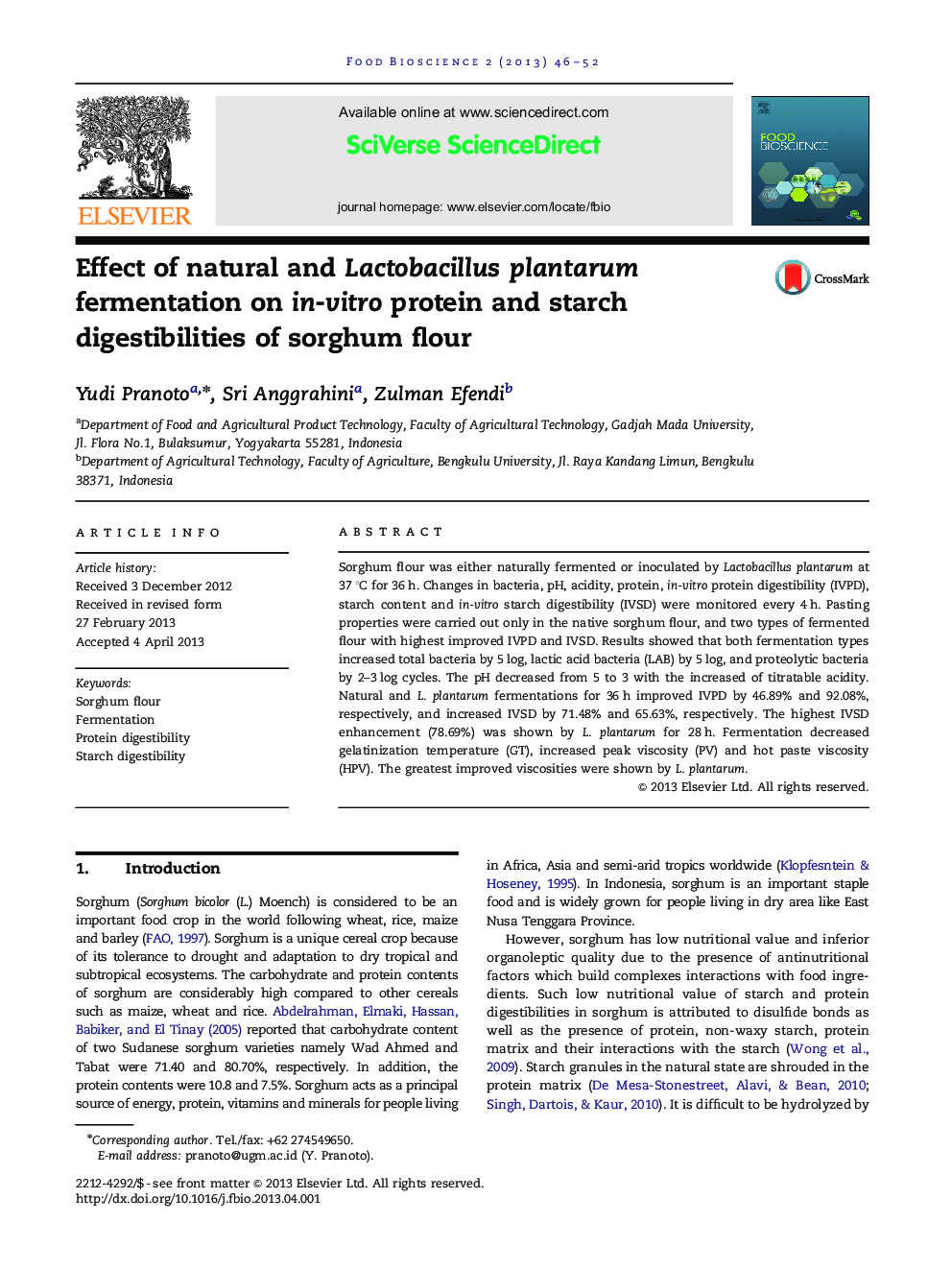| Article ID | Journal | Published Year | Pages | File Type |
|---|---|---|---|---|
| 19768 | Food Bioscience | 2013 | 7 Pages |
•Lactic acid bacteria seemed to be dominant microorganism in natural fermentation.•Natural and L. plantarum improved protein digestibility by 47% and 92%, respectively.•Natural and L. plantarum increased starch digestibility by 71% and 66%, respectively.•L. plantarum enhanced the increase of protein digestibility higher than starch digestibility.•Viscoamylograph confirmed that starches were liberated from the protein complex.
Sorghum flour was either naturally fermented or inoculated by Lactobacillus plantarum at 37 °C for 36 h. Changes in bacteria, pH, acidity, protein, in-vitro protein digestibility (IVPD), starch content and in-vitro starch digestibility (IVSD) were monitored every 4 h. Pasting properties were carried out only in the native sorghum flour, and two types of fermented flour with highest improved IVPD and IVSD. Results showed that both fermentation types increased total bacteria by 5 log, lactic acid bacteria (LAB) by 5 log, and proteolytic bacteria by 2–3 log cycles. The pH decreased from 5 to 3 with the increased of titratable acidity. Natural and L. plantarum fermentations for 36 h improved IVPD by 46.89% and 92.08%, respectively, and increased IVSD by 71.48% and 65.63%, respectively. The highest IVSD enhancement (78.69%) was shown by L. plantarum for 28 h. Fermentation decreased gelatinization temperature (GT), increased peak viscosity (PV) and hot paste viscosity (HPV). The greatest improved viscosities were shown by L. plantarum.
